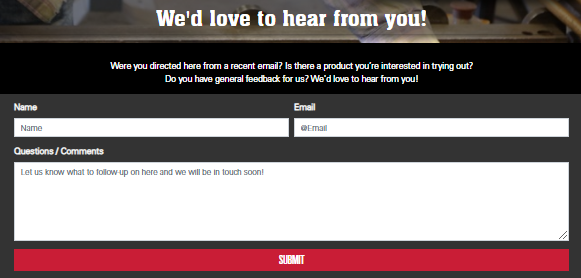30 May 05/30/2021
Our Best Work Rain Gear Features
For those who live in Alabama, Louisiana, Florida, and Mississippi, you’d better get accustomed to wearing safety gear designed to keep you dry. Those states, and almost every southern state, are ranked in the Top 10 for wettest states in the United States. And, if you live in a state where you get rain and snow, you’re going to need some rain gear that keeps you insulated, too.
We’ve provided an image (below) from the National Weather Service to help illustrate the nation’s precipitation rates in 2020.
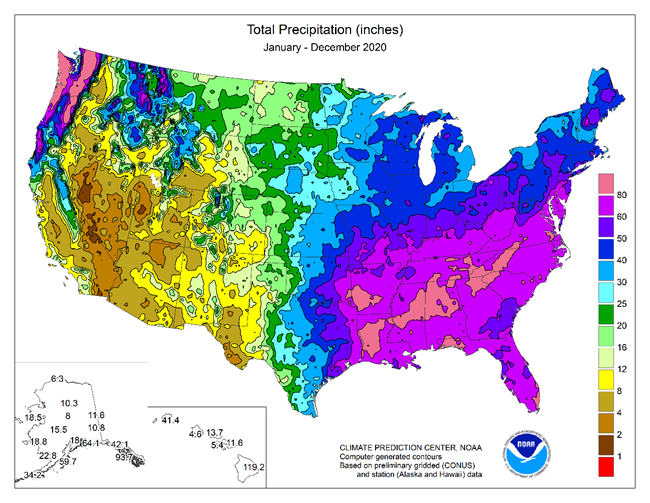
The National Weather Service’s Average Total Precipitation
As we highlight in our Rain Gear Categories article, we’ve been supplying rainwear since the 1980s. In that article, we also cover each of the core categories of rain gear: coats, suits, jackets, and ponchos. Now it’s time to examine some of the unique features that make MCR Safety’s rainwear some of the best rain gear designed for user needs.
This article will ensure you understand what makes each MCR Safety rain gear category stand out as unique. After reading, you’ll understand the most essential qualities to look for in rain gear, and the core features our rainwear provides to keep you protected.
Let’s dive into the specific features of rain gear so you can make the best-educated decision in choosing the equipment you require.
Top Qualities to Consider

Everyone interested in rain protection needs to know that not all rain gear is created equal, and there are numerous qualities to consider before purchasing. Materials and features of rainwear can vary widely.
Here’s a quick breakdown of several qualities you may want to consider when shopping for rain gear:
Construction and Function

Rain gear, first and foremost, is designed to keep you dry. In terms of waterproofing, you typically get what you pay for. Less expensive gear might use a more inexpensive coating or inner material that may not hold up during extended downpours. It also may mean the manufacturer has cut back on the quality of seals, which we cover more in-depth below. However, the most critical part of rain gear that determines waterproof effectiveness is the construction.
The final construction of most rain gear, excluding insulated jackets, will have what is referred to as a 1-layer, 2-layer, or 3-layer construction. Most ponchos are 1-layer and will not have a backing. A 2-layer design will have a coating and a fabric backing. However, some 2-layer designs feature two layers of PVC plied together and no backing. Lastly, a 3-layer design will be reinforced with an inner material, such as ripstop nylon, sandwiched between two coatings.
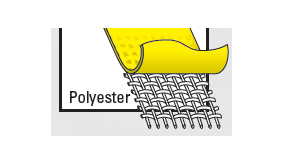 vs.
vs. 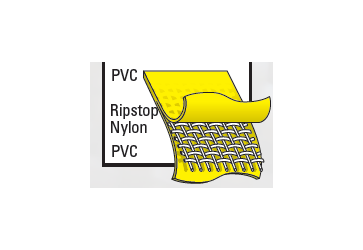
2-Layer Design vs. 3-Layer Design
Additional layers found in the construction of garments usually equate to increased durability and extraordinary overall performance in keeping you dry.
Comfort
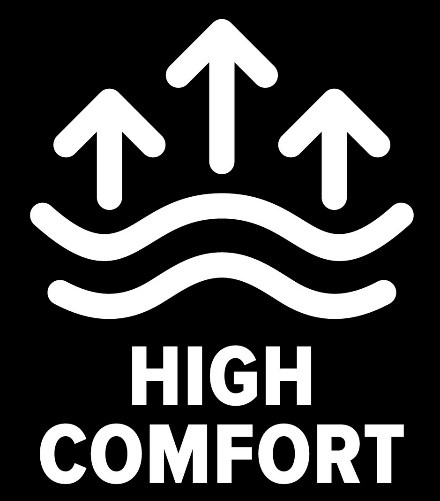
Those who wear rain gear throughout the day want to wear a comfortable design. Comfort in rain gear is, for the most part, determined by the weight, the coating used, and the garment’s overall breathability. Thicker rain suits can become a burden for someone moving around often. The lower-weight garments will provide more significant ease of movement but will sacrifice somewhat in keeping the rain out. Thankfully, MCR Safety uses new technologies that allow thicker gear to provide increased stretchability, permitting both comfort and protection to be achieved.
Some coatings, like PVC and neoprene, can be a little stiffer when compared to a polyurethane (PU) coating and stifle breathability. Our PU coatings are designed to allow garments to breathe and move easily without sacrificing protection from rain and liquids.
Durability
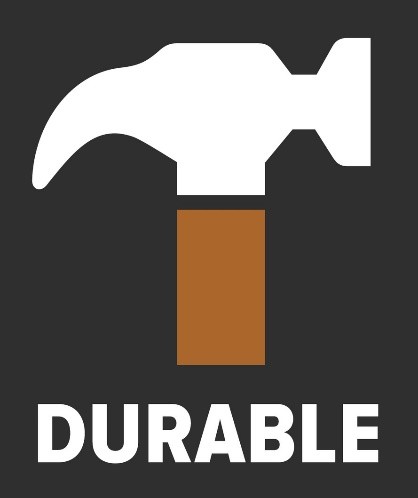
Worksites can be tough on outerwear garments, especially if you wear your rain gear daily. Those who rely on this type of protection regularly need it to hold up over time.
Durable rainwear should use premium, high-grade polymers and provide extra features like heavy-duty snaps and high-quality zippers. Neoprene coatings make up our most durable products and are discussed more in our heavy-duty section below. Since neoprene styles only accept stitched and taped seams, the stitching on these styles is reinforced for more extended wear.
Cheap Price vs. Quality

High-end rainwear will be waterproof, breathable, and comfortable. However, not everyone needs to spend top-dollar on heavy-duty rain gear because they don’t use it often and only need rain gear for a short period. That’s why our rain gear lineup has stood the test of time; we cater to both the high-end market and those seeking quality products at value pricing.
As you continue reading, you’ll understand that purchasing rain gear is a balance between all the factors mentioned above, along with the significant features that improve one’s experience in wearing the garment.
When the storm draws near, it’s the features offered that make one piece of rain gear stand out from another.
Breathable
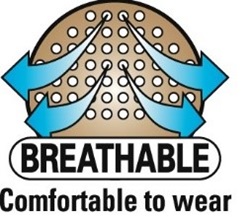
Let’s face it; even the best rain gear can become uncomfortable when it’s hot outside. That’s why we make styles designed to offer advanced forms of breathability that force sweat buildup and body heat back outside. Factors like temperature and humidity are significant factors when deciding to purchase gear that provides greater levels of breathability.
In more scientific terms, breathability refers to the “moisture vapor transfer” of a garment and the airflow it offers to keep wearers comfortable. Breathability for rain gear is vital because it also means limiting perspiration and trapped moist air! Early forms of rain gear were not all that breathable, but the times have definitely been a-changing, and today’s technology means our advanced coatings on rain gear, as shown below, allow for moisture transfer and breathability.
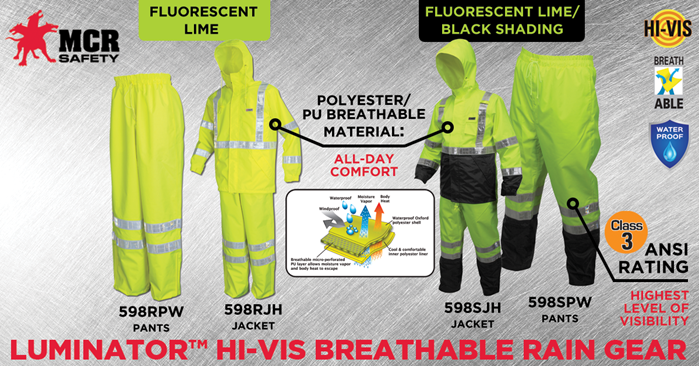
Experience all-day comfort wearing any of these options.
When the warm air inside a jacket can more efficiently transfer to the cooler air outside, it enhances breathability. Rainwear that can combine the ability to block rain and water while allowing sweat vapor and warm air to escape is priceless.
Our rainwear offers ventilated backs and underarm air vents to keep air flowing. Here is a description of how these are beneficial.
Ventilated Back
Refers to small holes covered by flaps cut in the upper back of the garment to allow airflow. These protected holes mean that hot air and sweat vapor go out, but rain does not come in. Ventilated backs are found on several of our rain gear styles, such as our 267C, 360C, and 600C coats.
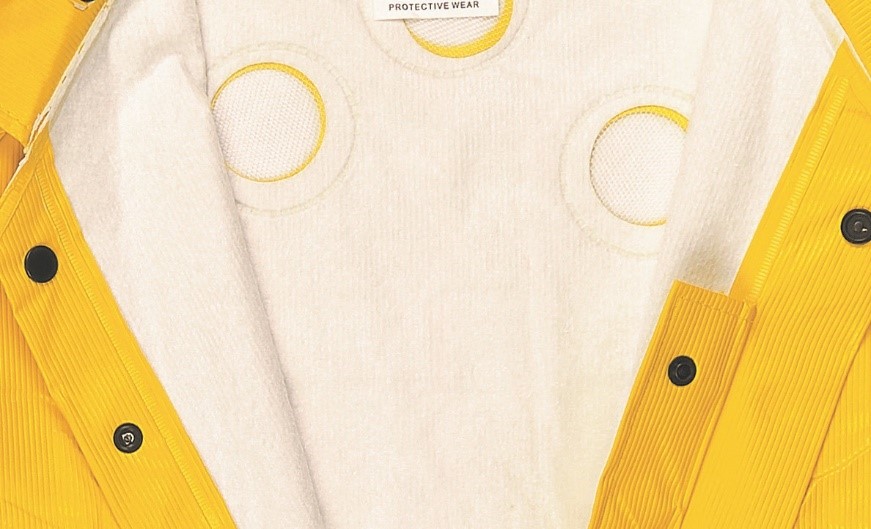
Underarm Air Vents
are small holes found under the arms of the garment to allow for airflow. As a general rule, any item that features underarm air vents, like our 7032 Challenger series, will also have a ventilated back, ensuring extra airflow and comfort.
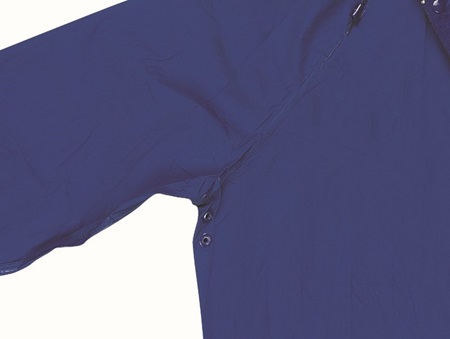
Heavy-Duty Rain Gear For Work
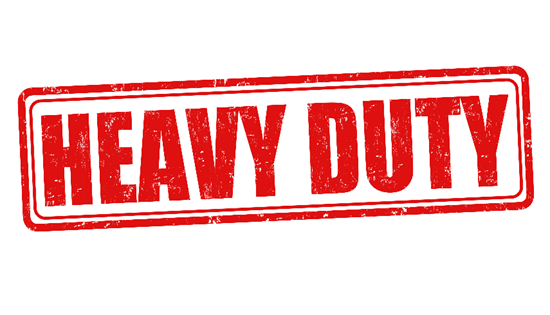
A sturdy set of rain gear is critical PPE across multiple industries, including commercial fishing and agriculture. So, what features make the best heavy-duty rain gear? Made of neoprene, our Concord style options offer wearers a rugged and long-lasting design and are available in coats, jackets, and bib pants.
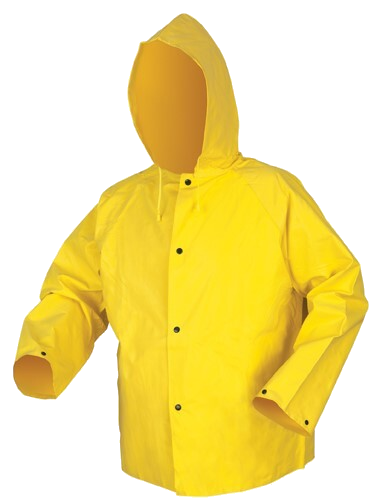
Concord Jacket
The Concord’s stitched and taped seams ensure extended wear. Also, since neoprene is more porous than PVC, it holds less energy and offers a better barrier against hotter and colder temperatures.
Those who do not want to spend money on a high-end neoprene garment should consider the 3-layer designs we offer. Our 3003 Wizard series, for example, features ripstop nylon, an inner woven grid fabric designed to add strength to the garment and help prevent tears from spreading. This pattern of nylon is also known as scrim nylon.
Hi Vis Reflective

High-visibility clothing is essential during bad weather, including snowy and rainy conditions, as it keeps you seen in low-light environments. Hi-vis rain gear contains retro-reflective materials that can reflect light from headlamps and other sources in the lower light of rainy conditions.
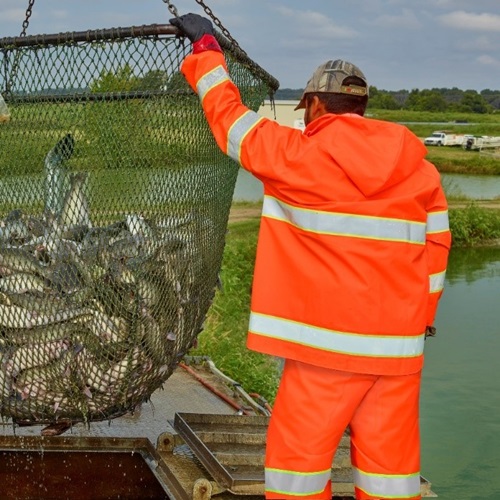
Our 2013R is both hi-vis and heavy-duty.
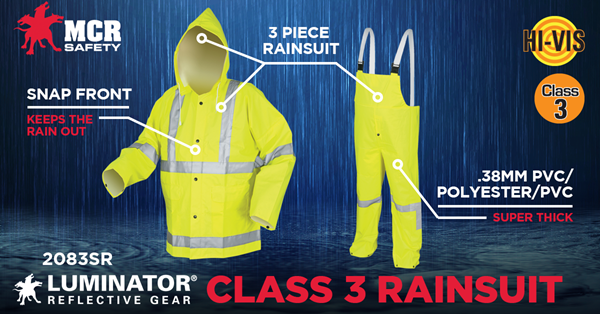
Our 2083R is super thick, at .38mm.
The bright color options of our hi-vis rain gear also contrast with backgrounds, increasing visibility. Colors such as fluorescent yellow-green, red, and orange-red are all standard choices for high-visibility gear.
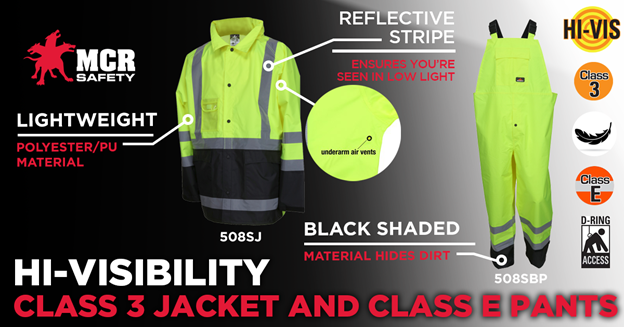
Hi-Vis Class 3 rain gear uses the ANSI 107-2015 as the standard for ensuring you’re visible when on the job.
Even when the weather’s clear, hi-vis gear can enhance one’s safety and visibility across any job site.
Lightweight
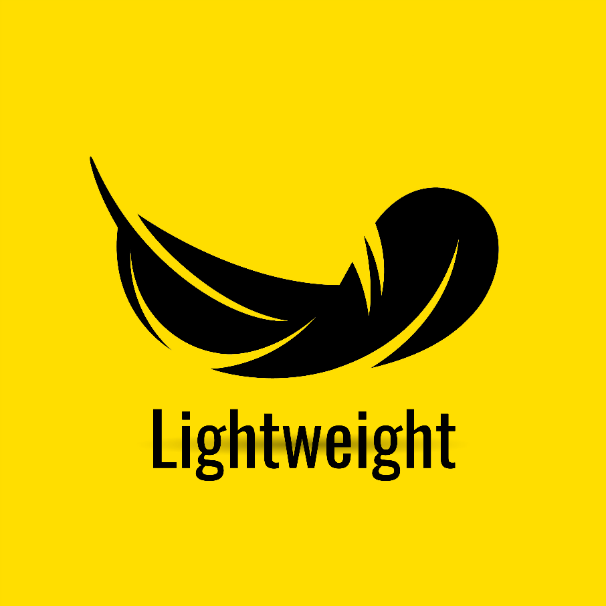
Lightweight rain gear takes the burdensome weight off the wearer and is most often made with lightweight PU. These styles are designed to let you operate and move much more effortlessly and comfortably than heavier weight styles.
MCR Safety’s 550J Navigator Series jacket provides a durable but lightweight option for those seeking rain protection. Its polyurethane/nylon construction keeps the jacket’s weight down while still offering comfortable, durable performance.
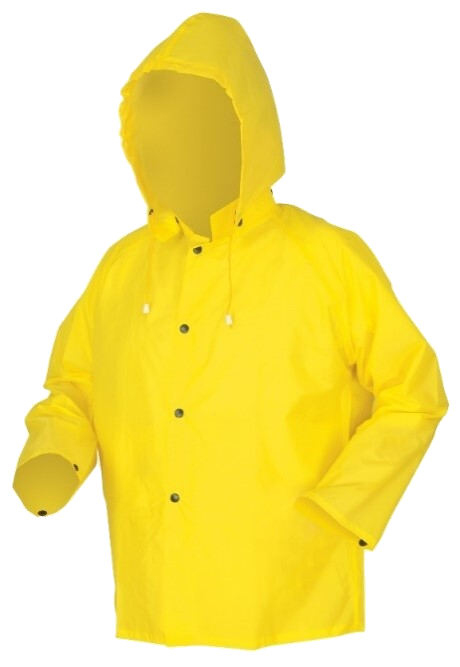
550J is made with super lightweight PU, only .22mm thick.
If you’re always on the move at your worksite and need something to protect against a passing shower, carrying a lightweight rain should be a suitable option.
Stretch and Flexibility

Are you looking for rainwear that stretches and moves with your body? The 5182S, shown above, does just that. Its knitted stretch fabric moves with you for a more comfortable fit. This hi-vis PU rain suit is an excellent alternative to wearing a heavier PVC garment. We also stock the 5182, shown below, which comes with no shading.
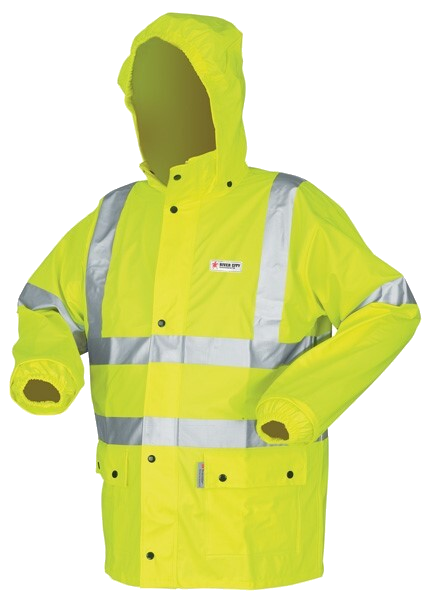
The 5182 is exceptionally stretchy and flexible.

The UT38JH stretches, breathes, and is lightweight – the trifecta in rain gear!
Sealed Seams, Explained

Whenever a garment is constructed with multiple materials, the seams must be joined together and sealed to keep water out. Seams are an area you don’t want to overlook when comparing different styles. Higher quality stitching and welded seams will help prevent garments from tearing or allowing rain inside. This is especially important around zippers and fasteners. Here are the most common forms of sealing:
- Flat-lock Seams – pull two pieces of material together side-by-side and stitch them without any overlap of material. No layers are folding to the underside, so there is no added bulk. These seams are often found in garment linings or next-to-the-skin garments because of their smooth, flat finish. It’s the ideal stitching for warmer weather; however, it’s not ideal for heavy downpours.
- Heat-Welded Seams –are sealed by heating the fabric to the point of melting the fibers together. PVC styles require a heat-welded seam. Our most popular series with welded seams is the Classic series.
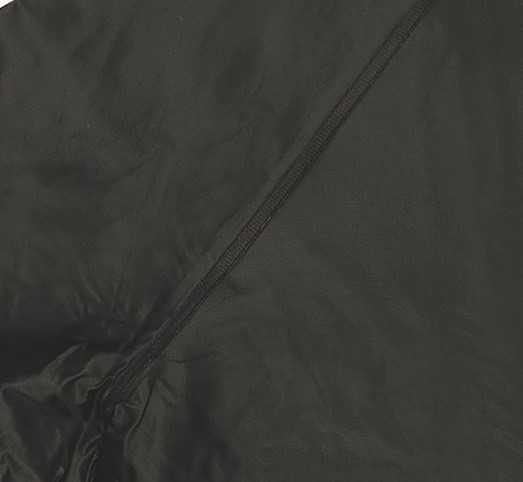
- Stitched and Tape - As the name suggests, stitched and taped Seams are stitched together and then taped over with waterproof tape. The tape is heat-sealed over the stitching, making the seams waterproof. Our most popular series with stitched and taped seams is the Concord series.

- Weather-Sealed – waterproof the areas surrounding the zipper.
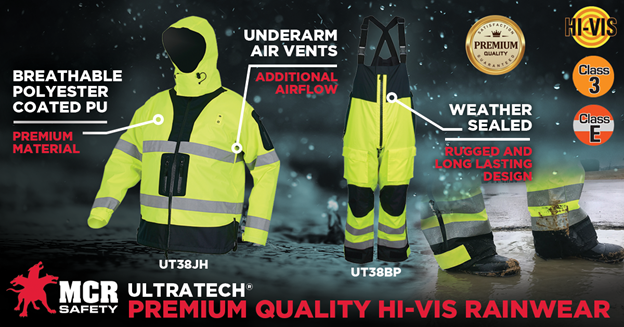
Any rainwear classified by us as “premium” will have high-end, weather-sealed seams to prevent water from seeping in.
If you ever run into rain gear that doesn’t feature those types of stitches on its seams, it’s a pretty good indicator the product is not designed to keep out liquids.
Linings
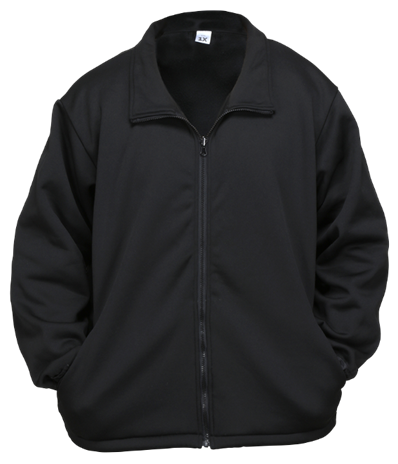
It may be a part of the garment you don’t often see, but liners are a critical piece of quality rain gear. Liners ensure a garment is comfortable to wear and that it is warm during the winter months. In addition, they improve the garment’s structure. Below are the different types of liners commonly found in garments:
- Cotton – a soft lining that breathes and is non-static
- Fleece – a fuzzy, lightweight liner that provides warmth and dries quickly if it becomes wet
- Nylon – offers excellent waterproof and wind-resistant properties in addition to outstanding wear resistance
- Polyester – a commonly used liner that offers low cost, moisture-wicking properties, stretchability, and strength
- Polyester Satin – creates a smooth, luxurious-feeling liner
- Quilted – a comfortable liner that provides users with medium-weight insulation, ideal for fall and winter months
Many liners can be removed, especially in our insulated lineup. When you see the numbers 2-1 and 4-1 used, the garment allows the inner liners to be removed.
Pockets
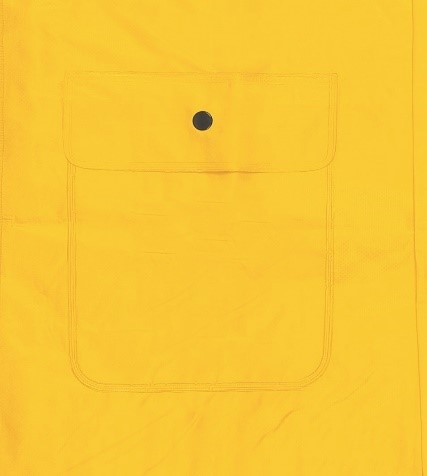
The ability to store personal gear close at hand is crucial for most people! When you’re wearing an outer garment covering your first layer of clothing, however, you’ll be prohibited from reaching your first pocket. We offer a variety of solutions to help safeguard your personal belongings while leaving them easily accessible.
- Patch Pockets – have a top flap that folds down over the pocket to prevent liquids from entering.
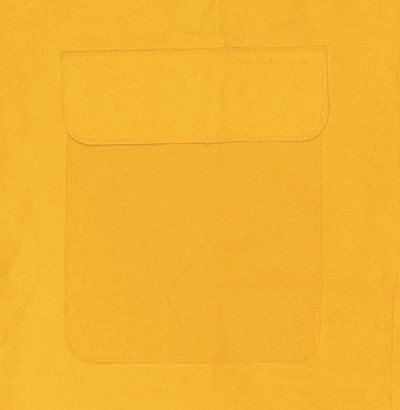
- Slash-Through or Reach-Through Pockets – a covered opening that allows the user to reach through the garment to the clothing underneath.
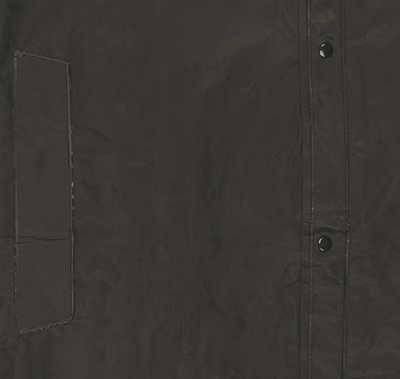
By integrating pockets on outwear, it’s effortless to keep your stuff on hand. Just make sure you purchase the option that works best for your needs and provides the protection you need for your application.
Wrist and Ankle Closures
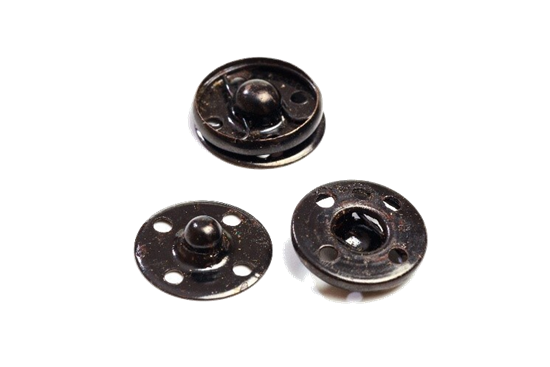
Rain gear needs to stay closed and secure. Different styles of rain gear use different types of closure points, and it’s another area you don’t want to overlook because it’s the critical point where water, wind, or snow can enter. When the torrential downpour arrives, you’ll want protection that closes up securely.
Some garments are designed without closure points, where others provide advanced closures to keep cold temperatures, rain, and wind from entering. Here are the different closure types found in our garments:
- Hook and Loop – adjustable closures are sometimes used on specialty suits, such as our Hydroblast suit, which helps ensure the total seal of closures. As we highlight in our High Pressure Washing article, a complete seal is an essential feature for those cleaning dirt, grime, and oil off in refineries.
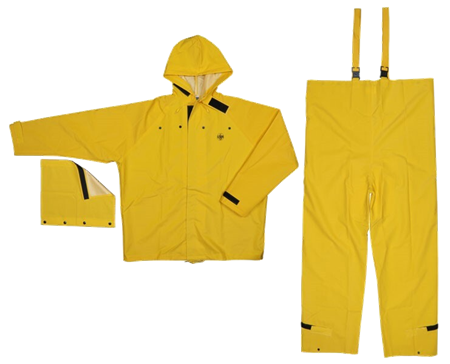
Hook and loop closures are an excellent option for those with different arm lengths, as they allow the gear to fit correctly to each individual. They allow for a customized fit at the leg or wrist openings, an essential feature if garments tend to run small or large on you.
- Elastic Closures – are the most efficient way of opening and closing closure points. They provide a snug fit that helps to keep the rain out.
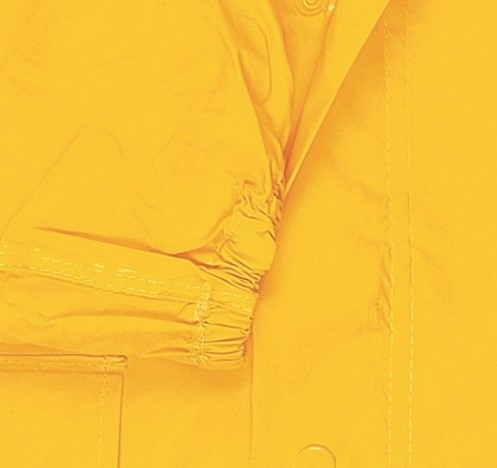
- Inner Sleeve or Inner Ankle – closures involve an added elastic sleeve or ankle inside the open sleeve or ankle that fits snugly to prevent liquid splash-back. These are an integral part of making the Dominator series such a well-recognized chemical-resistant piece of rain gear. Our Vortex series rain gear also features an inner sleeve to keep cold weather and snow coming inside the sleeves.
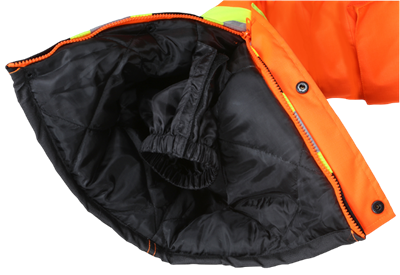
Vortex’s Inner Sleeve
- Snap Closures - are made from metal or plastic and are one of the most popular fasteners for all kinds of garments, significantly heavier weight gear that can withstand the force of opening the snap.
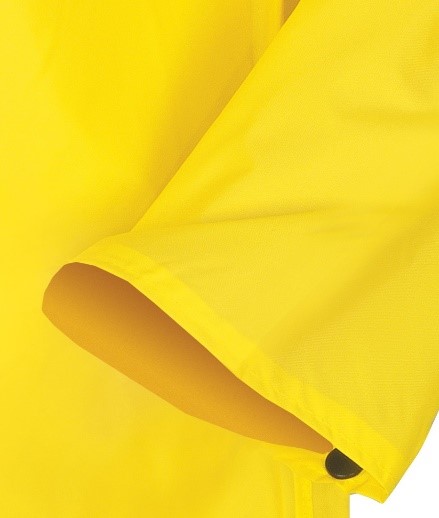
Additional Important Rain Gear Terms

- Corduroy Collars – refer to the soft material added to a garment’s collar that provides comfort and style. All of our Classic Plus options feature a corduroy collar.
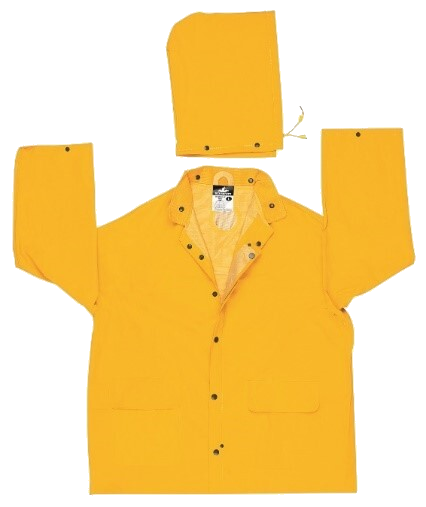
- Fly Front– openings are the opening in the front of rain pants. These openings can be snapped or unsnapped, as shown below in the 3003 Wizard 3-piece rain suit.
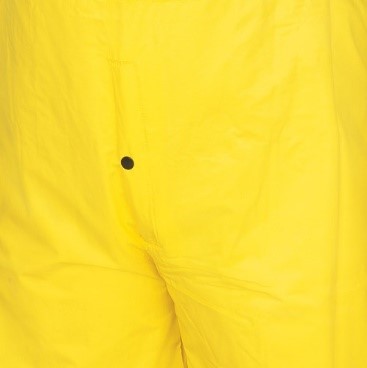
- Raglan Sleeves allows for the most mobility in a jacket and is the most common jacket construction method. There are two front panels, one back panel, and two sleeves. The sleeves are sewn or heat-sealed to the other three panels.

- Storm Flaps – refer to an added piece of material sewn over a garment’s front closure, and it is designed to help prevent liquid from entering between the snaps or through the zipper. Storm flaps are an essential feature for those who know they will be working in the wind and rain. They also keep the zipper protected from external elements, lengthening the wear of the garment.
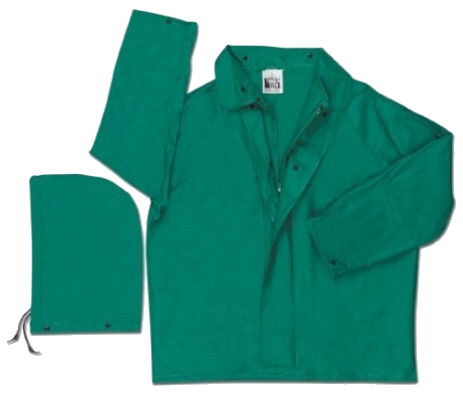
Our Dominator series rainwear lineup features a double storm flap!
Common Questions

How to wash rain gear?
- You’ll find a complete guide that provides instructions for washing PVC garments here. Just remember, it’s a good idea to hang dry the garment to ensure increased longevity.
Who makes River City rainwear?
- River City was founded in 1983 and represents the “R” within MCR Safety. Three companies merged in 2004, Memphis Gloves, Crews Glasses, and River City, making up one company, MCR Safety.
Big and Tall Sizing - 4XL, 5XL, 6XL, and more
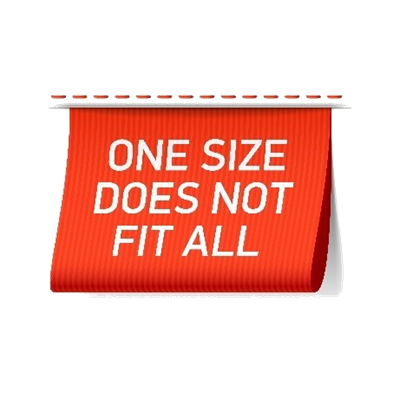
A correct fit is essential for proper performance. The standard industry guide for size selection is as follows:
| Rainwear Sizing: | Men’s (actual inches) | Men’s (actual inches) | Ladies (clothing size) | Ladies (clothing size) |
| Jacket (chest) | Pants (waist) | Jacket (size) | Pant (size) | |
| S – Small | 34” – 36” | 28” – 30” | 6 – 8 | 10 – 12 |
| M – Medium | 38” – 40” | 32” – 34” | 10 – 12 | 14 – 16 |
| L – Large | 42” – 44” | 36” – 38” | 14 – 16 | 18 – 20 |
| XL – Extra Large | 46” – 48” | 40” – 42” | 18 – 20 | 22 – 24 |
| X2 – XX Large | 50” – 52” | 44” – 46” | 22 – 24 | 26 – 28 |
| X3 – XXX Large | 54” – 56” | 48” – 50” | 26 – 28 | 30 – 32 |
| X4 – XXXX Large | 58” – 60” | 52” – 54” | 30 – 32 | 34 – 36 |
| X5 – XXXXX Large | 62” – 64” | 56” – 58” | 34 – 36 | 38 – 40 |
| X6 – XXXXXX Large | 66” – 68” | 60” – 62” | 38 – 40 | 42 – 44 |
| X7 – XXXXXXX Large | 70” – 72” | 64” – 66” | 42 – 44 | 46 – 48 |
| X8 – XXXXXXXX Large | 74” – 76” | 68” – 70” | 46 – 48 | 50 – 52 |
| X9 – XXXXXXXXX Large | 78” – 80” | 72” – 74” | 50 – 52 | 54 – 56 |
| X10 – XXXXXXXXXX Large | 82” – 84” | 76” – 78” | 54 – 56 | 58 – 60 |
You can filter size across all our garments by visiting our online rain gear catalog.
As mentioned above, this article has highlighted the specific features and qualities found in rain gear. To better understand the different categories where these features are applied and learn about the different polymers used to make various garments, click the image below.
MCR Safety's Rain Gear Categories
Professional Safety Rain Gear Done Right
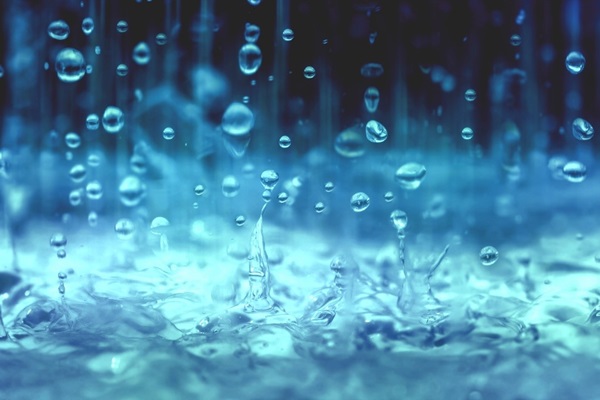
Yes, you can check the weather forecast for rain, but no one ever truly knows for sure if, or when, Mother Nature will choose to unleash rain showers. When she does bring the rain, you’re going to need some rain gear. We hope the above has helped you in selecting the best options for your needs.
For those who prefer seeing our product line down the exact rain gear configurations, we have you covered there, too.
We welcome any comments, feedback, or suggestions for how we can best protect people at work.
For over 45 years, MCR Safety has proven to be a world leader in gloves, glasses, and garments. Whether it's on the shop floor, an oil rig, a construction site, or shooting outdoors, we are there to provide solutions to workplace (and recreational) hazards. It's all part of our commitment to protect people.
No matter your industry, we have the personal protective equipment you need.
Learn more about MCR Safety by checking out our most recent video. For more information, browse our website, request a catalog, find a distributor, or give us a call at 800-955-6887.
About the Author
Related Articles
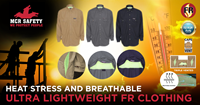
Heat Stress and PPE: Hi-Vis Wicking T-Shirts and Breathable Ultra-Lightweight FR Clothing
or those who can't avoid working around heat, taking necessary precautions can help them prevent...
PPE: Definition, Meaning, Gear, and Equipment
Many industries and jobs have terms they shorten into acronyms to save everyone a mouthful of...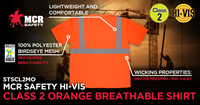
Hi-Vis Shirts: Staying Safe, Seen, and Stylish
Being visible to drivers who may not be aware of what's going on around them is critical. When...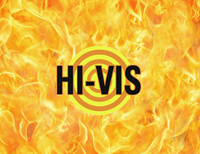
Hi-Vis FR Clothing: Reflective Fire-Resistant Clothing
MCR Safety recognizes that workers face risks of thermal hazards combined with the disadvantage...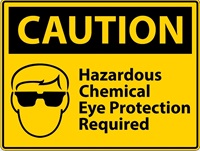
OSHA and Safety Glasses
OSHA requires employers to provide eye and face protection for all employees. Both employers and...Latest Articles






